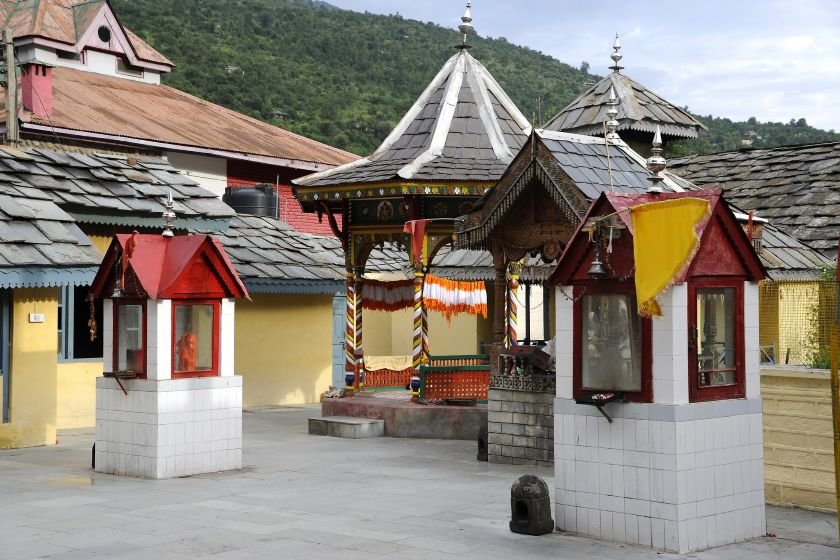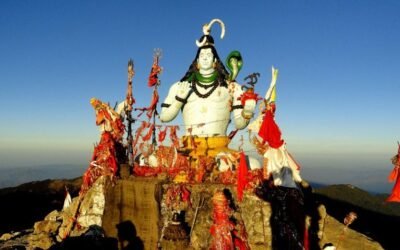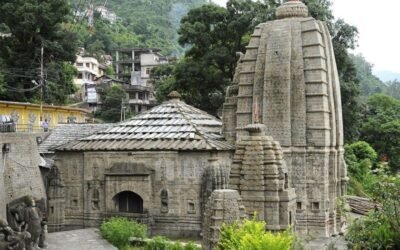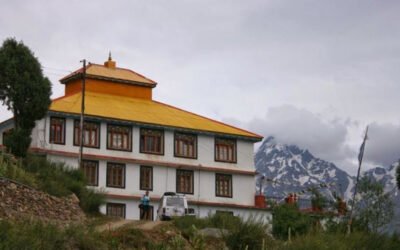Set against the lush backdrop of the Beas River and nestled in the heart of Sultanpur, the Raghunath Temple is the spiritual nucleus of Kullu Valley. Built in 1660 CE by Raja Jagat Singh, this temple is not only a shrine to Lord Rama (Raghunathji) but also the symbolic seat of power in the valley—where the deity is revered as the true king of Kullu.
🌄 Location & Accessibility
- Location: Sultanpur, Kullu town, Himachal Pradesh – 175101
- Altitude: ~1,220 meters above sea level
- How to Reach:
- By Road: Easily accessible from Kullu Bus Stand (~1 km)
- By Air: Bhuntar Airport (~10 km)
- By Rail: Joginder Nagar (~125 km) or Pathankot (~250 km)
- Local Access: Walkable from Dhalpur Ground and Kullu Market
🛕 The Legend of Repentance and Redemption
The temple’s origin is steeped in a tale of guilt and atonement. Raja Jagat Singh, misled by rumors, accused a Brahmin named Durga Dutt of hoarding pearls. When the Brahmin and his family immolated themselves in protest, the king was consumed by remorse. To cleanse his soul, he brought an idol of Lord Rama from Ayodhya and installed it in this temple. He then renounced his throne, declaring Raghunathji as the eternal ruler of Kullu.
Since then, the temple has been the spiritual and ceremonial heart of the valley.
🕉️ Deity & Worship
Raghunath Temple enshrines Lord Rama in his kingly form as the sovereign deity of Kullu. The main idol, brought from Ayodhya by Raja Jagat Singh, is made of black stone, seated with regal ornaments and venerated as the ruler of the valley. Worship includes aarti, flower garlands, and tulsi leaf offerings, accompanied by daily recitations of the Ramayana. Devotees pray for justice, dharma, and social harmony, while the temple plays the pivotal role in Kullu Dussehra as the ceremonial epicenter.
🏛️ Architectural Highlights
- Built in Pahari and pyramidal style, with wooden beams, stone walls, and a three-tiered roof
- The sanctum houses a black stone idol of Lord Rama, believed to be the same one worshipped in Ayodhya
- The temple’s slanted roof is designed to withstand heavy snowfall
- A golden kalash crowns the spire, symbolizing divine sovereignty
🎉 Kullu Dussehra – The Royal Procession of the Gods
- Kullu Dussehra (October):
- Begins on Vijayadashami, unlike elsewhere in India
- The idol of Raghunathji is carried in a chariot procession, accompanied by over 200 village deities
- The festival culminates with the burning of Lanka effigies on the banks of the Beas
- Declared an International Festival, it draws thousands of pilgrims and tourists
🕉️ Daily Worship & Local Devotion
- Morning and evening aartis are performed with conch shells and temple bells
- Devotees offer flowers, sweets, and red cloth to the deity
- Locals believe that no major decision in Kullu—from marriages to festivals—is made without invoking Raghunathji’s blessings
🏞️ Nearby Attractions
- Bijli Mahadev Temple: Known for its lightning-struck Shiva lingam
- Naggar Castle & Roerich Art Gallery: A blend of history and art
- Basheshwar Mahadev Temple, Bajaura: An ancient stone temple near Bhuntar
- Manikaran Sahib & Parvati Valley: Spiritual and scenic escapes
🙏 Spiritual Experience
The Raghunath Temple is not just a place of worship—it’s the soul of Kullu, where myth, monarchy, and devotion converge. As you stand before the idol that once ruled a kingdom, you feel the weight of history and the lightness of grace. It’s a place where repentance became reverence, and a king became a devotee.




